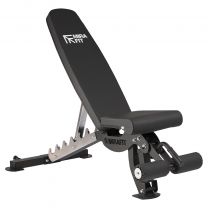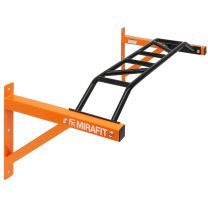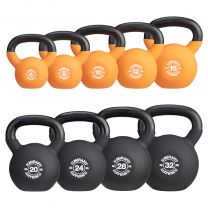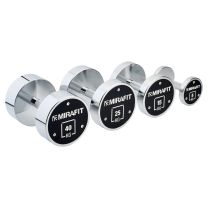How to Get a V-Shaped Body
How to Get a V-Shaped Body

While a lot of our motivation and efforts in the gym should be about getting stronger and healthier, for most, there is no greater motivation to start training than to change their body shape. And there is no reason to feel bad about having aesthetic training goals, as long as you stay healthy in your approach and balance them with intrinsic training goals.
There are few aesthetic goals more popular than the V-Shape look, epitomised by athletes like Michael Phelps or bodybuilders like Chris Bumstead.
What is a V-Shaped Body?
So, what actually is a V-shaped physique? A thin waist and a broad upper body. This will give you a V-shaped body. Simple.
Do Genetics Play a Role?

Like anything, genetics will certainly play a role. They affect how well we gain muscle. They affect how we distribute body fat; some may proportionately store more fat around their stomach and waist, making the V-shape more difficult to achieve. Hard tissue related factors like the size and shape of our frame in the first place will also make it easier or more difficult to achieve a V-shaped figure.
However, this is only a part of the puzzle, and you should always avoid submitting to your predetermined genetics, if possible, for we are all dealt a particular set of cards, which determines our starting position, but not where we end up.
So, favourable genetics or not, you can still become more V-Shaped, if you so desire, and there are a few key muscles to train for you to do so.
Key Muscles to Train for a V-Shaped Body

Deltoids
Key Function
The deltoids are a major adductor of the arm. They also assist in flexion of the arm (anterior fibres) and extension of the arm (posterior fibres).
Functional Role
They therefore have many important roles in daily life and sport: Reaching to a shelf, picking something up above your head, throwing a javelin, throwing a ball or even a tennis swing.
Favourite Deltoid Exercise - Lateral Raises
Lateral raises are a great way to target shoulder adduction in isolation, unlike other shoulder/upper body exercises which only partially target this function.
Equipment Required
Lateral raises can be done with Dumbbells, Kettlebells, a Cable Machine or Resistance Bands.
Lats
Key Function
The lats (Latissimus Dorsi) play a key role in adduction, medial rotation and extension of the arm at the shoulder joint.
Functional Role
The lats are often referred to as the climbers’ muscles given that they play a key role in pulling yourself up through shoulder extension. They also play a key role in sports like swimming, gymnastics and rowing. In day-to-day life, they can play a key role in movements as simple as pulling yourself out of a chair, which is a key function in maintaining your functional capacity as you age.
Favourite Lat Exercise - Hollow Body Pull Up
A low equipment exercise, making it easily accessible, whether you have access to an indoor gym, outdoor park gymnasium or even just a pull up bar. The hollow body position further challenges the core but also stops you from using your legs for momentum, making this an even more challenging lat exercise.
Equipment Required
Any variation of a Pull Up Bar.
Traps
Key Function
The traps (trapezius) play a key role in elevation of the scapular, rotation of the scapular during abduction above horizontal, retraction of the scapular and depression of the scapular.
Functional Role
Functionally the traps play a key role in things like painting a wall, picking up objects from the floor or carrying heavy objects. Sports that heavily utilise the traps include Rowing, Boxing or throwing sports like javelin or shot put.
Favourite Trap Exercise - Bent Over Reverse Fly
The bent over reverse fly is a great way to heavily target scapular retraction, which proportionately might be neglected in other pulling movements. It also does so with very little axial loading (load on the spine) due to the light weights required to make it challenging. This makes it a great training accessory if you are looking to load the traps without acquiring extra fatigue elsewhere.
Equipment Required
Bent over reverse flies can be done with dumbbells, a cable machine or resistance bands and you can even do them laying on an inclined Weight Bench if you are managing an injury that makes the bent over position difficult.
Add these exercises to your training plan, no matter your genetics, to help work towards that V-Shaped body that you have always wanted. After building the muscle required, you may then move onto a fat loss phase to target the narrower waist to complete the look. Remember to accompany this with training goals unrelated to aesthetics to keep you enjoying training.
Written by guest author Ewan Hammond.
For more content, follow us on Instagram, YouTube, TikTok, and on our official Mirafit Facebook page.
Enter your email to signup to our newsletter
Tags: Equipment > Dumbbells








